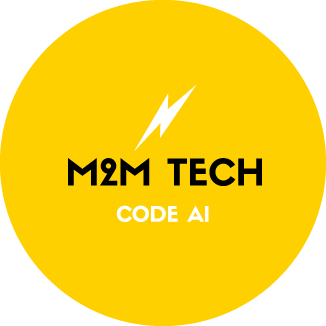In the ever-changing field of biotechnology, where a medical breakthrough might save millions of lives in a matter of days, researching RNA and its impact on biological processes is a common path to one of these breakthroughs. At M2M, we've been collaborating with one of our clients to analyze how a multitude of differing 230,000+ RNA sequences impact the TLR9 protein, a protein with great potential to lead to many therapeutic breakthroughs. Through this collaboration, our goal is to identify patterns within RNA sequences that lead to a high binding affinity with the target protein, which could lead to many therapeutic uses.
The Obstacle: Mapping Out RNA-Protein Interactions
Identifying and understanding patterns of how different RNA sequences bind to proteins such as TLR9 is an arduous task. TLR9 itself plays a crucial role in distinguishing patterns of RNA and DNA from invading pathogens, which trigger immune responses within our body. TLR9 is vital in defending the human body; however, misregulation of it can lead to a myriad of problems, such as autoimmune disorders, chronic inflammation, autoinflammatory disease, etc.
RNA sequences are also very complex themselves, adding an additional layer on top of this already challenging problem. RNA binding is very specific from sequence to sequence, and the intricate structure of RNA molecules and TLR9 requires the utmost precision in analysis. Without utilizing the correct software or lack of domain knowledge, finding meaningful patterns in the data would be equivalent to taking a shot in the dark.
M2M's Approach: Unveiling Hidden Potential
To address these daunting hurdles, M2M has leveraged computational biology software as well as machine learning processes to develop tools and create a pipeline that analyzes RNA-protein interactions without sacrificing accuracy. A unique approach we've taken is that instead of focusing on the tertiary (3D) structure of RNA sequences, which is computationally taxing, we've instead analyzed how the 2D structure binds with the target protein. Analyzing the 2D structure instead offers several key advantages:
- Computational Efficiency: 2D structure prediction is significantly faster and less resource-intensive than full 3D modeling, allowing us to process as many RNA sequences as possible from the original amount of 230,000+.
- Sequence-Based Targeting: A lot of RNA-protein interactions rely on primary sequence motifs and secondary structural elements (stems, loops, bulges) that can be effectively captured in 2D representations.
- Conservation Patterns: RNA secondary structures are usually evolutionarily conserved, which signals that 2D analysis is sufficient for therapeutic targeting.
- Robustness to Conformational Dynamics: RNA molecules are dynamic and complex, with many substructures within the structure; 2D representations can capture the ensemble of structures RNA will adopt, whereas a 3D snapshot could potentially miss relevant conformational states.
Through this analysis, our research isn't only to explain how RNA interacts with TLR9 but to also explore the patterns which could contribute to therapies in autoimmune diseases.
Machine Learning Coming into Play
Our machine learning implementation features two central and specialized GPT2 Medium models: a sequence classification model that predicts RNA-protein binding scores directly from RNA sequences (without the need of additional software,) and a sequence generation model that produces novel RNA candidates based on patterns found in the RNA that lead to tailored binding to specific target proteins. This eliminated the need for computationally expensive 3D simulations, accelerating the analysis pipeline and allowing us to examine much more RNA sequences than we would have had we stuck with 3D sequences.
To boost model performance, we implemented generalization challenges through additional training epochs and choosing RNA sequences with patterns that have not been run through the model previously (a group of sequences with many A nucleotides, for example). By combining these models with our information found from docking the RNA sequences against the protein in Hdock (which allows us to attain binding affinity scores), we created a framework that refined predictions using continuous feedback, allowing us to quickly screen hundreds of RNA candidates before devoting resources to structural analysis of only the most promising sequences.
Impact: Looking Ahead into the Future
Our collaboration highlights the therapeutic potential hidden within TLR9 and allows us to extend this research to other proteins of interest apart from it. Thus, demonstrating the importance of modern machine learning techniques and computational tools in biotechnology. Through this research, we can enable clinicians to:
- Develop targeted therapies for immune disorders.
- Improve understanding of how immune systems react to diseases.
- Create personalized medicine based on specific RNA-protein interactions found.
The study of TLR9 interactions is one small step in a much larger process taking place throughout the whole industry. With every new discovery, we move closer to a future where machine learning and biotechnology go hand in hand to tackle some of the world's most pressing health problems. While our work with TLR9 was specific, it reflects a larger trend in the industry to focus on the research of RNA. To mRNA vaccines and use of RNA interference to prevent genetic diseases the application of RNA research is massive. Here at M2M, we're excited to take part in this journey, innovating with clients to unlock new possibilities in RNA-based therapies.
Interested in working with our team at M2M Tech? Check out our Business Accelerator or connect with us at contact@m2mtechconnect.com!
Contact Us






